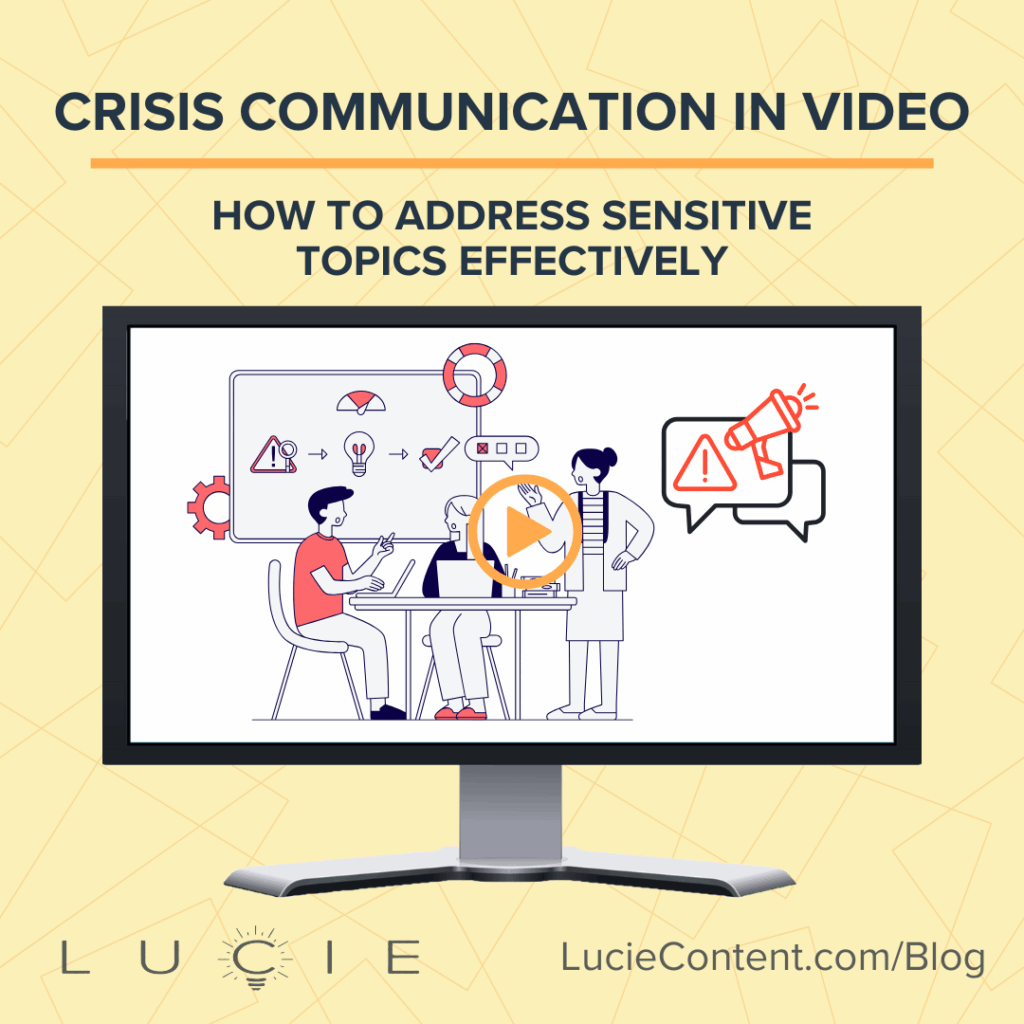Random, reactive video creation often leads to inconsistent results, missed opportunities, and wasted resources. In contrast, a strategic video content calendar transforms your marketing efforts, ensuring consistency, effectiveness, and measurable impact. With video marketing now making up over 82% of internet traffic and 93% of marketers reporting video delivers excellent ROI (Wyzowl), structured planning is no longer optional—it’s essential.
Businesses embracing strategic video planning not only improve their marketing results but also develop stronger customer relationships, driving sustained growth. In this comprehensive guide, you’ll learn how to build a robust video content calendar that aligns business goals with audience preferences, optimizes resources, and maximizes marketing effectiveness.
Quick Navigation:
- Audit Your Current Videos
- Understand Audience Insights
- Align Videos with Business Objectives
- Define Strategic Content Pillars
- Map Videos to the Buyer Journey
- Customize Content for Each Platform
- Construct Your Calendar Timeline
- Optimize Your Content Mix
- Coordinate Your Team Workflow
- Plan Production Strategically
- Measure and Refine for Continuous Improvement
Part 1: The Foundation – Audit and Analysis
1. Audit Your Current Videos
Before building your future content strategy, start by auditing your existing video library. Categorize each video clearly:
- Type: Tutorials, product demos, testimonials, brand stories, customer interviews, or behind-the-scenes footage.
- Campaign Goals: Which business initiatives did each video support, and how well did they meet these objectives?
- Audience Segments: Who was each video designed to reach, and was it successful in resonating with that segment?
Next, analyze detailed performance metrics:
- Engagement levels (views, shares, comments).
- Conversion rates (click-throughs, sign-ups, sales).
- Drop-off points (identifying exactly when viewers lost interest).
This detailed analysis helps you understand what’s working, what isn’t, and uncovers patterns or opportunities to optimize future content.
2. Understand Audience Insights
Successful video marketing revolves around deeply understanding your audience. Gather comprehensive audience insights, including:
- Demographic details such as age, location, and device usage.
- Platform-specific preferences (content types that excel on Instagram vs. LinkedIn, etc.).
- Engagement data, such as watch duration, shares, and types of comments.
Segment your audience further to discover nuanced preferences. For example, your B2B viewers may prefer detailed, long-form educational content, while your B2C audience engages more effectively with shorter, visually engaging videos.
3. Align Videos with Business Objectives
Your video calendar must directly support defined business objectives. Clearly articulate upcoming priorities:
- Revenue goals and marketing milestones.
- New product or service launches.
- Seasonal trends and opportunities.
- Competitive differentiation needs.
Videos shouldn’t just fill your schedule—they should strategically contribute to business outcomes such as increasing brand awareness, driving conversions, or improving customer retention.
Part 2: Strategic Framework Development
4. Define Strategic Content Pillars
Developing 3–5 core content pillars helps maintain strategic focus and consistency. Effective pillars balance promotional content with valuable audience-centric information. For instance, typical pillars could include:
- Thought leadership content positioning your brand as an expert.
- Product or service demonstrations clearly illustrating features and benefits.
- Customer success stories building trust through real-world validation.
- Behind-the-scenes content humanizing your brand and fostering audience connection.
5. Map Videos to the Buyer Journey
Different stages of your buyer journey demand specific video types:
- Awareness Stage: Audiences explore problems and potential solutions.
- Introductory brand videos, educational content addressing key challenges, and insightful thought leadership.
- Consideration Stage: Prospects weigh their options.
- Detailed product or service demos, comparative videos, and transparent behind-the-scenes footage highlighting your brand’s unique strengths.
- Decision Stage: Buyers finalize their choices.
- Strong testimonials, comprehensive case studies, and instructional onboarding content that reassures and removes any final doubts.
Clearly mapping content to each stage provides a coherent, guided journey from awareness to conversion.
6. Customize Content for Each Platform
Understanding platform-specific best practices is essential to maximize engagement:
- LinkedIn: Professional, authoritative content (1–3 minute videos emphasizing thought leadership, industry insights, or B2B-specific topics).
- Instagram: Visually striking, brief videos (15–60 seconds, highly visual, creative, and concise messaging).
- YouTube: Longer-form, informative content optimized for search (5–15 minutes, using SEO-rich titles and descriptions).
- TikTok: Short, casual, engaging content (15–45 seconds, leveraging trends and authenticity).
Customize notes in your calendar for each video, detailing specific adaptations for each platform, ensuring optimal reach and performance.
Part 3: Calendar Construction and Organization
7. Construct Your Calendar Timeline
Organize your calendar clearly to streamline production and distribution:
- Annual Overview: Map key campaigns, product launches, seasonal themes, and overarching business goals.
- Quarterly Planning: Define detailed objectives, specific pillars, and measurable targets.
- Monthly Scheduling: Clearly specify each video, production deadlines, and publishing timelines.
- Weekly Workflow: Outline daily tasks, individual responsibilities, and promotional activities.
This structured approach minimizes stress and maximizes productivity, ensuring strategic alignment at every step.
8. Optimize Your Content Mix
A balanced video mix keeps audiences engaged:
- Content types: Vary educational, promotional, entertaining, and interactive formats.
- Format diversity: Incorporate live streaming, short-form quick hits, and detailed, long-form productions.
- Publishing frequency: Identify optimal posting times for maximum engagement across different platforms.
- Evergreen vs. timely content: Maintain roughly 60–70% evergreen content, complemented by timely, trending topics.
This strategy creates a sustainable library of videos continuously generating results.
9. Coordinate Your Team Workflow
Clear workflows and responsibilities are crucial:
- Assign roles: Define clearly who is responsible for each phase—creation, editing, approval, publishing, and promotion.
- Set streamlined approval processes involving key stakeholders.
- Use efficient asset management systems for easy access and organization.
- Establish robust communication channels for consistent feedback and improvement.
Templates for scripts, briefs, and distribution plans further enhance efficiency and ensure consistency.
Part 4: Production Planning Integration
10. Mapping Production Needs to Calendar
Your content calendar must align with production realities. For each video in your calendar, identify:
- Budget requirements and allocation
- Team members or external resources needed
- Equipment and location planning
- Time required for pre-production, filming, and post-production
This detailed planning prevents the common pitfall of an ambitious calendar that can’t be executed with available resources. It also helps identify opportunities to optimize production through batching or repurposing.
11. Efficiency Optimization: Batching
Strategic production planning can dramatically increase your video output without proportionally increasing resources. Consider these approaches:
- Content batching: Film multiple videos in a single session with shared setups
- Modular production: Create base videos that can be customized for different segments
- Content repurposing: Plan how longer videos can be cut into platform-specific clips
- Template-based creation: Develop consistent formats that streamline production
For example, a single interview session could yield: a long-form YouTube video, several short LinkedIn tips, Instagram Reels highlights, and quote graphics for multiple platforms – all scheduled throughout your calendar.
12. Measure and Refine for Continuous Improvement
A truly effective video content calendar is never static. Use performance data to continuously refine your approach:
- Experiment and Optimize: Test various video formats, topics, and publishing times, refining your approach based on business metrics such as leads generated, sales influenced, and customer retention rates.
- Adapt Based on Engagement: Continuously evolve your content by analyzing audience engagement patterns, watch durations, completion rates, and viewer interactions.
- Leverage Emerging Platforms: Stay agile by incorporating new platforms and features that resonate with your audience, tracking subscriber or follower growth to measure success.
- Update Content Pillars Regularly: Adjust your core content themes proactively to align with shifting market conditions, informed by continuous analysis of audience feedback and performance data.
Consistently evaluate these KPIs, making data-driven refinements weekly, monthly, and quarterly, ensuring continuous optimization and improved performance over time.
Conclusion
A strategic video content calendar transforms chaotic, reactive content creation into a purposeful system that consistently delivers results. By taking the time to analyze your audience, align with business objectives, and develop a structured approach to planning and production, you create a sustainable engine for video marketing success.
The most successful video marketers aren’t necessarily those with the biggest budgets or the most advanced equipment – they’re the ones who approach content creation with strategic intent, careful planning, and consistent execution.
Ready to elevate your video marketing strategy?
At Lucie Content, we specialize in helping businesses develop and execute strategic video marketing plans that drive real results. Our team of experienced content strategists and video production professionals can help you create a customized content calendar that aligns with your unique business goals and audience needs.
Contact us today to learn more about our comprehensive video production services. Let’s transform your video marketing from occasional content into a strategic business asset.












